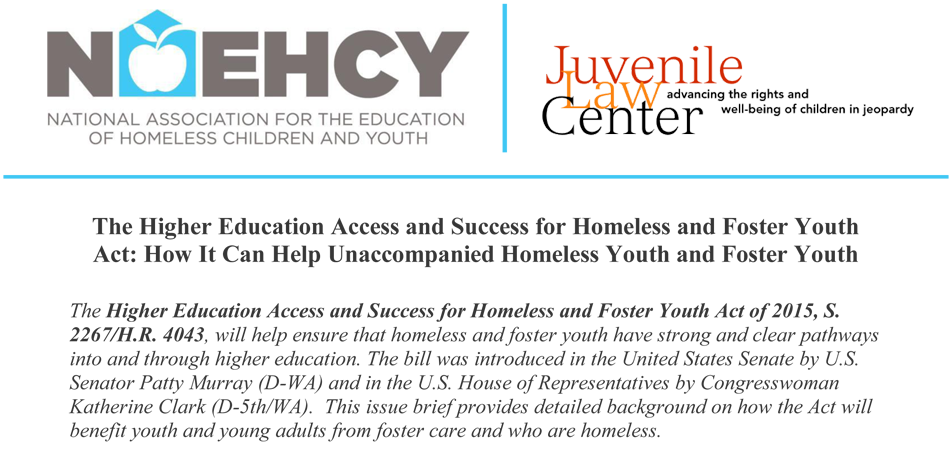The Higher Education Access and Success for Homeless and Foster Youth Act: A Position Paper

The Higher Education Access and Success for Homeless and Foster Youth Act of 2015 (S. 2267/H.R. 4043), will help ensure that homeless and foster youth have strong and clear pathways into and through higher education. The bill was introduced in the United States Senate by U.S. Senator Patty Murray (D-WA) and in the U.S. House of Representatives by Congresswoman Katherine Clark (D-5th/WA).
Unaccompanied homeless youth are young people who lack safe, stable housing and who are not in the care of a parent or guardian. They may have run away from home or been forced to leave by their parents. Unaccompanied homeless youth live in a variety of temporary situations, including shelters, the homes of other people, cars, campgrounds, public parks, abandoned buildings, motels, and bus or train stations. Almost 400,000 children and youth are in foster care in the U.S. Most youth enter the foster care system due to abuse and neglect. The goal of the child welfare system is to make it possible for youth to safely return to their own homes or, if that is not possible, to find new families. This issue brief provides detailed background on how the Act will benefit unaccompanied homeless youth and youth in foster care.